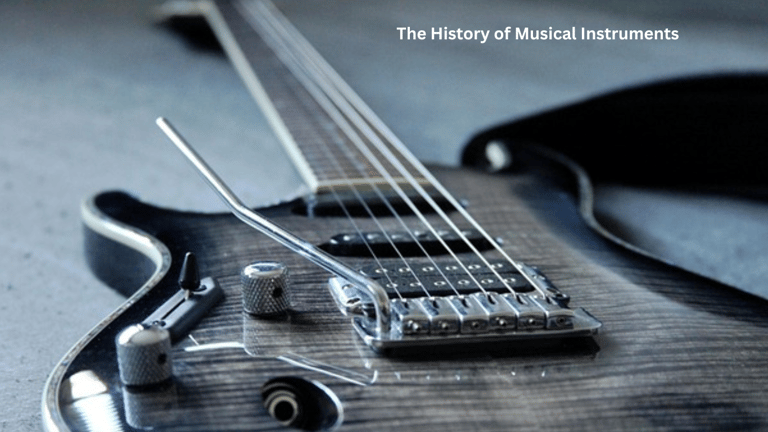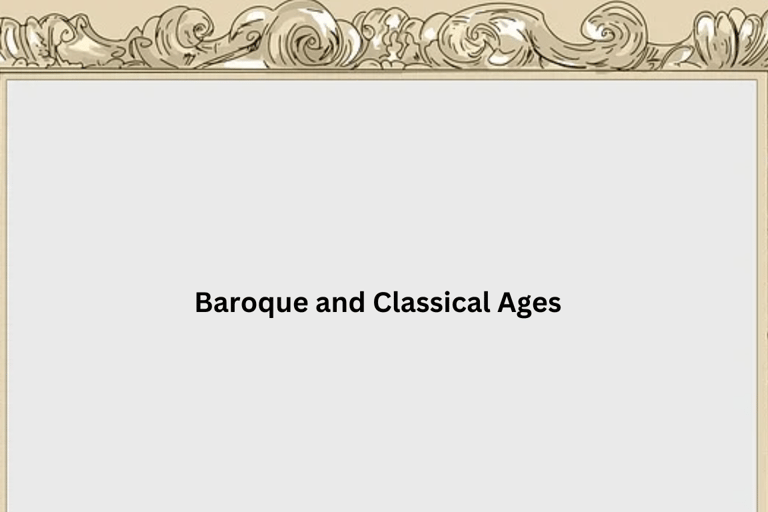The History of Musical Instruments Comprehensive Guides and Encyclopedias
1/25/20254 min read


"The History of Musical Instruments: Comprehensive Guides and Encyclopedias"
It has been the soul of human culture regarding its time, place, and linguistic variations since ancient times. Inside this music is the instrument. Human civilization has just been advancing in similar manners as its musical instruments had followed the technological upgrades, changes in cultural feelings, and various periods of artistic growth. This report shall provide an overview of the general background and history concerning the development of musical instruments from different cultures and comprehensive guides and encyclopedias in which they assist in their maintenance.
History of Musical Instruments
Music making is a human activity whose origins date back to the prehistoric period, from which the use of the very first material as a naturally occurring object for sounding. First, people used instruments that could easily be derived from the things they had abundantly around, which included stones, bones, shells, and wood. The earliest known instruments were percussive because the first rhythms could have been realized through clapping, striking objects, or stomping their feet.
Earliest Known Instruments
Bird bone and mammoth ivory flutes were also found. Therefore, winds are among the oldest historical instruments humankind could discover for creating noise. The oldest instrument recorded was the Divje Babe flute from Slovenia, aged 40,000. The development of rhythm and, more particularly, percussion can easily be attributed to a specific finding of evidence confirmed from archaeological excavations through the discovery of drums and rattles.
Olden Civilizations and Instruments
Progress in human civilizations led to the evolution of instruments. However, some civilizations contributed significantly toward the development of these instruments. First came Mesopotamia, followed by Egypt, India, China, Greece, and ultimately Rome.
Mesopotamia and Emergence of String Instruments
The first known culture to invent stringed instruments is Mesopotamia. Their lyres and harps date back to around 2500 BCE. Such instruments were lavishly carved, overlaid, and used costlier materials, signifying their function in sacred rites and rituals.
Egypt: Music in the Afterlife
The play of music was a character of ancient Egyptian life and spiritual practice. A sistrum: The most commonly used instruments are rattles and lutes. Scenes in the tomb paintings depict music as a means of helping the deceased into the afterlife.
India: The Vedic Tradition
The Vedic period of India goes back to 1500 BCE-500 BCE. Chants and hymns were the core body of religion. Of all the main instruments, the veena, a plucked string instrument, and mridangam, one of the drum sets, are an integral part of Indian classical music.
China: Innovation and Diversity
It comprises the seven-stringed zither of China's past and reed mouth organs. The Chinese system of Bayin categorizes the materials used in crafting the instruments, including metal, stone, silk, and bamboo.
Greek and Roman Legacy and the Origin of Western Music
Music was part of one's education curriculum—an accompaniment to plays. It was also included in ancient Greek rituals about religious practices. The most commonly used instruments during those times were aulos, double reed, and kithara, the lyre version. The Romans employed most Greek instruments, but, as would be the case with most nations, they established their own, too. Hydraulis was an ancestor of pipe organs.
Medieval and Renaissance Period
Apparently, during the medieval period (500 CE—1400 CE), all of the main innovations in instruments emerged because the Christian faith had spread over a more significant part of Europe, and cross-cultural influence was predominantly Islamic. The leading new developments were instruments, including the lute, hurdy-gurdy, and the pre-keyboard era clavichord.
During the Renaissance, 1400—1600 CE, saw renewed interest in art, science, and music, leading to even newer instrument designs. Individuals then began using violins, recorders, and other violin families. Print copies of musical notations with directions made learning music comparatively straightforward.
Baroque and Classical Ages
The Baroque period, 1600 CE—1750 CE, was marked by opulence in musical sound. The popularity of the harpsichord and violin emerged, and the orchestra took shape. The instruments became tools for composers like Johann Sebastian Bach and Antonio Vivaldi to set their words and thus imprint themselves within the Western annals of music.
This was the classical period, 1750 CE—1820 CE. It was one of clarity and balance. The fortepiano was invented, an ancestor of the modern piano. Brass instruments received valves and became more diverse and extensive.
The Romantic Period and Beyond
The Romantic period, 1820 CE—1900 CE, was more emotive and expressive. Instrument makers responded with new technological innovations to enable the construction of instruments that could be played with more excellent dynamics and tonal range. A new, modern piano, its cast-iron frame still the heart of the music of the time.
The 20th and 21st centuries were incorporated into electronic instruments and digital music. Almost every modern style of contemporary music is related to synthesizers, electric guitars, and drum machines.
Comprehensive Guides and Encyclopedias
Such documents and encyclopedias are in great demand for the authentication and verification of history and the development of processes for musical instruments. It is a source that makes it possible to gain information concerning instrumentation, its use, and cultural usage. A few of these include:
"Musical Instruments: A Comprehensive Dictionary"
This would be handy for musicians, historians, and enthusiasts covering ancient to modern instruments.
"The History of Musical Instruments" by Curt Sachs
It is a seminal work in organology and portrays the study of musical instruments. It provides copious information regarding what has changed over the ages under the aegis of various cultures as far as instruments are concerned.
FAQs
1. What did musical instruments symbolize in the world?
Musical instruments were used in religious ceremonies, happiness, and language in ancient cultures. They were considered sacred, and they also created gods and goddesses.
2. How do modern cultures alter musical instruments?
For example, synthesizers, electric guitars, and digital sound production and recording equipment are modern commodities that convert sound into electronic equipment.
3. What is organology?
Organology is the science of studying musical instruments based on their history, building, and cultural value.
4. Why are encyclopedias useful in the study of musical instruments?
Richly detailed, reliable sources, encyclopedias for researchers, musicians, and teachers exploring musical instrument history and diversity.







